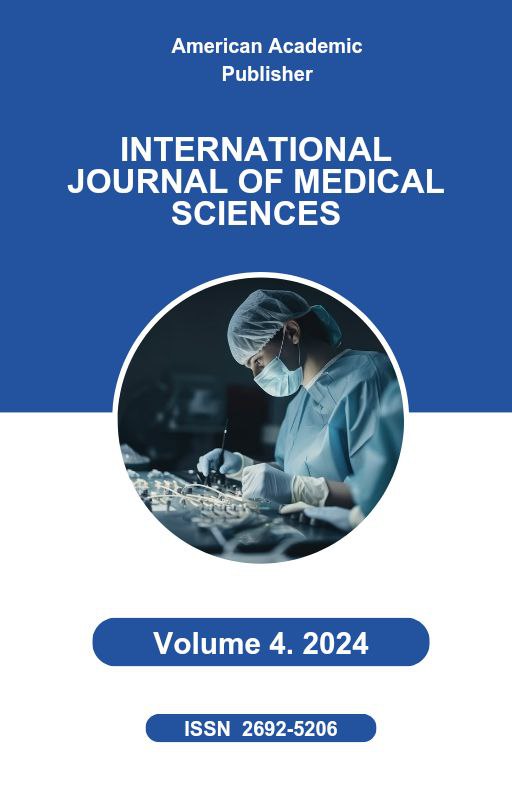 Articles
| Open Access |
https://doi.org/10.55640/
Articles
| Open Access |
https://doi.org/10.55640/
THE REGENERATION OF NERVOUS TISSUES: THE DIFFERENCE BETWEEN VERTEBRATES AND HUMANS
Muhammadjonova Koxinur Dilmurodjon kizi , Student of Andijon branch of Kokand University Faculty of Medicine 1st year Department of Therapeutic WorkAbstract
The regeneration of nervous tissues is a fundamental topic in neuroscience and regenerative medicine, with significant implications for the treatment of injuries and neurodegenerative diseases. While many vertebrates demonstrate a remarkable capacity to regenerate components of their nervous system, humans have a relatively limited ability in this regard. This disparity has led to intense scientific interest in understanding the underlying biological mechanisms that govern nervous tissue regeneration across different species. In vertebrates such as fish and amphibians, neuronal regeneration is robust and efficient. For instance, zebrafish can regenerate entire sections of their spinal cord and optic nerve after injury. Similarly, salamanders are capable of regenerating complex neural structures, including limbs that contain nerve tissues. These regenerative processes are supported by the presence of active neural stem cells, permissive microenvironments, and reduced scarring and inflammation following injury.
In contrast, humans and other mammals exhibit a very restricted ability to regenerate nervous tissues, particularly within the central nervous system (CNS). Injuries to the spinal cord or brain often result in permanent functional deficits due to limited neurogenesis, glial scarring, and inhibitory molecular signals that prevent axonal regrowth. Although some neurogenesis occurs in the adult human brain, particularly in regions like the hippocampus and subventricular zone, it is not sufficient to repair extensive damage. Moreover, peripheral nervous system (PNS) regeneration is more successful in humans than CNS regeneration, yet even this is limited by the extent and severity of injury.
The evolutionary basis for these differences is an area of active investigation. It is hypothesized that the enhanced complexity and specialization of the human brain may have come at the cost of regenerative plasticity. Additionally, differences in immune responses, gene expression patterns, and the cellular microenvironment contribute to the disparity between species. Vertebrates that can regenerate nervous tissues typically exhibit a dampened immune response that allows for tissue repair without extensive fibrosis. In contrast, humans have a more robust inflammatory response, which, while protective, often impedes regeneration.
Recent advances in molecular biology and stem cell research have opened new avenues for understanding and potentially enhancing nervous tissue regeneration in humans. Techniques such as induced pluripotent stem cells (iPSCs), gene editing, and biomaterial scaffolds are being explored to mimic the regenerative capacity observed in lower vertebrates. Comparative studies between regenerative and non-regenerative species offer valuable insights into the key factors that promote or inhibit nervous system repair.
In conclusion, the regeneration of nervous tissues represents a key biological difference between vertebrates and humans, with profound implications for medical science. While lower vertebrates demonstrate impressive regenerative abilities, humans are significantly limited in their capacity to recover from neural injuries. Understanding these differences at a cellular and molecular level is crucial for developing effective therapies to treat spinal cord injuries, brain trauma, and neurodegenerative conditions. Bridging the gap between species through translational research may eventually enable humans to harness regenerative processes that are currently beyond our biological capabilities.
Keywords
Nervous tissue regeneration, vertebrates, humans, central nervous system, peripheral nervous system, neurogenesis, neural stem cells, spinal cord injury, brain repair, axonal regrowth, glial scarring, inflammation, immune response, regenerative medicine, comparative biology.
References
Ferretti, P., & Géraudie, J. (1998). Retinoic acid and regeneration in amphibians. International Review of Cytology, 180, 1–49. https://doi.org/10.1016/S0074-7696(08)61772-6
Tanaka, E. M. (2003). Cell differentiation and cell fate during urodele tail and limb regeneration. Current Opinion in Genetics & Development, 13(5), 497–501. https://doi.org/10.1016/j.gde.2003.08.005
Silver, J., & Miller, J. H. (2004). Regeneration beyond the glial scar. Nature Reviews Neuroscience, 5(2), 146–156. https://doi.org/10.1038/nrn1326
Fawcett, J. W., Schwab, M. E., Montani, L., Brazda, N., & Müller, H. W. (2012). Defeating inhibition of regeneration by scar and molecules. Current Opinion in Neurobiology, 22(4), 557–563. https://doi.org/10.1016/j.conb.2012.01.005
Hutchins, E. D., Markov, G. J., Eckalbar, W. L., George, R. M., King, J. M., Tokita, M., ... & Kusumi, K. (2014). Transcriptomic analysis of tail regeneration in the lizard Anolis carolinensis reveals activation of conserved vertebrate developmental and repair mechanisms. PLoS ONE, 9(8), e105004. https://doi.org/10.1371/journal.pone.0105004
Sehm, T., Sachse, C., Frenzel, C., Echeverri, K., & Becker, C. G. (2010). miR-196 is essential for zebrafish spinal cord regeneration. Journal of Neuroscience, 30(30), 9656–9667. https://doi.org/10.1523/JNEUROSCI.1100-10.2010
Kyritsis, N., Kizil, C., Zocher, S., Kroehne, V., Kaslin, J., Freudenreich, D., & Brand, M. (2012). Acute inflammation initiates the regenerative response in the adult zebrafish brain. Science, 338(6112), 1353–1356. https://doi.org/10.1126/science.1228773
Gage, F. H., & Temple, S. (2013). Neural stem cells: Generating and regenerating the brain. Neuron, 80(3), 588–601. https://doi.org/10.1016/j.neuron.2013.10.037
Tetzlaff, W., Okon, E. B., Karimi-Abdolrezaee, S., Hill, C. E., Sparling, J. S., Plemel, J. R., ... & Kwon, B. K. (2011). A systematic review of cellular transplantation therapies for spinal cord injury. Journal of Neurotrauma, 28(8), 1611–1682. https://doi.org/10.1089/neu.2009.1177
Article Statistics
Downloads
Copyright License

This work is licensed under a Creative Commons Attribution 4.0 International License.

